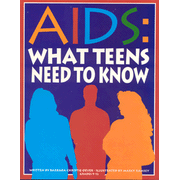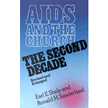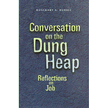|
|
|
What is AIDS?
AIDS stands for Acquired Immune Deficiency Syndrome. When a person's immune system has been damaged he or she is open to other illnesses, especially infections (e.g. tuberculosis and pneumonia) and cancers, many of which would not normally be a threat. When someone gets one of these illnesses the person is often said to have AIDS.However, it is not a term used as widely anymore. Doctors may instead call this 'late stage' or 'advanced HIV infection'.
How is HIV passed on?
For someone to become infected, a sufficient amount of HIV must get into their blood. The body fluids which contain enough HIV to infect someone are blood, semen, vaginal fluids including menstrual blood, and breast milk.
Saliva, sweat and urine do not contain enough virus to infect someone. HIV cannot pass through intact external skin, or through the air like a cold or flu virus.
The main routes of transmission in the UK are:
Through sex without a condom - HIV can pass from one person to another through unprotected anal or vaginal sex. For information about the small risk associated with oral sex, please click here.
Through injecting drug use - HIV can be passed on by using needles or syringes that someone with HIV has already used.
From mother to baby - a pregnant woman may transmit the virus to her baby before or during birth, or HIV can be passed on during breastfeeding.
Through organ transplant, blood transfusion or blood products - before it was known that donated blood might contain HIV, many people with haemophilia became infected through receiving contaminated blood products. However since 1985, all blood and tissue donations and blood products in the UK have been screened for HIV.
How does the HIV test work? The most commonly used test is an HIV antibody test. Antibodies are produced by the body in response to the presence of HIV, and this test looks for those antibodies
What is the window period? When someone becomes infected with HIV, it can take up to three months for their immune system to produce enough antibodies to show up on an HIV test (although in a few cases it can take up to six months) - this gap is known as the window period. Because the HIV test looks for antibodies, taking an HIV test less than three months after possibly getting infected might not give an accurate result. However, throughout the window period , the infected person has enough virus in the blood, breast milk or sexual fluids to infect another person even though it wont show on a test.
Can you treat HIV? There is no vaccine or cure for HIV. However, anti HIV drugs are available, and taking a combination of anti-HIV drugs can slow down the damaging effect of HIV on the immune system.
AIDS STATISTICS:
Orphans: Defined by the UN as those under age 15 having lost their mother or both parents. More than 13 million children have lost one or both parents to the AIDS pandemic
In some areas of Africa, one out of every three children is an orphan
Fifteen million people worldwide will contract HIV this year
40 million people are estimated to be living with HIV/AIDS. Of these, 37.1 million are adults. 18.5 million are women, and 3 million are children under 15
During 2001, AIDS caused the deaths of an estimated 3 million people, including 1.1 million women and 580,000 children under 15
The global number of orphans due to AIDS is going to double in a decade
Current figures (for the year 2001) show there are now 108 million orphans in the world, 13.4 million (12.4%) of them orphans because of AIDS
By 2010 UNAIDS estimates there will be a grand total of 107 million orphans in the world - virtually no change there - but a mind-numbing 25 million of them will be orphans of AIDS. That's 23.7% of all orphans
There are 34 million orphans in Africa, of whom 11 million are believed to be orphans of AIDS. One third of Africa's orphans, or about one child in 20 overall, has lost his or her parents to HIV
UNAIDS reports that in 2001 sub-Saharan Africa was the most afflicted of any region in the world by HIV/AIDS
In 2001, 3.5 million new cases of infection were recorded in the region, and 2.2 million people died of the disease
Women and girls make up 58% of those who are infected
Studies in 20 countries--most of them in Africa--show that children whose parents have died are more likely to be malnourished and less likely to attend school than those who have not lost a parent
Many of these orphans are discriminated against, exploited, or abused. Some end up living on the street, surviving by picking pockets, theft, begging, and prostitution
About one in four AIDS deaths are among children less than five years old
AIDS is fatal, with no cure and no vaccine to prevent its spread. Medical science offers drug therapies to retard its invasion into the body and prolong life, but these medicines are far beyond the reach of the poor in Africa. Most do not even have access to simple treatments such as aspirin or first-aid ointments
Annual cost of treating AIDS patients worldwide: $60 million. This cost divided by people worldwide: $10 per person
At least 10% of the population ages 15-49 in 12 African countries is infected
By some estimates more than 25% of the workforce may be lost to AIDS by 2020 in some badly hit African countries
In one study HIV/AIDS households had 30-35% lower annual incomes than in non-affected families, and the death of an adult from AIDS reduced the food consumption in the poorest households by 15%
In some societies, “property grabbing” relatives restrict or force widows and orphans off their land
(Statistics from http://www.worldvision.org)

AIDS: What Teens Need to Know
Click here to buy this book.

AIDS & the Church: The Second Decade
Click here to buy this book.

Conversation On The Dung Heap
Click here to buy this book.